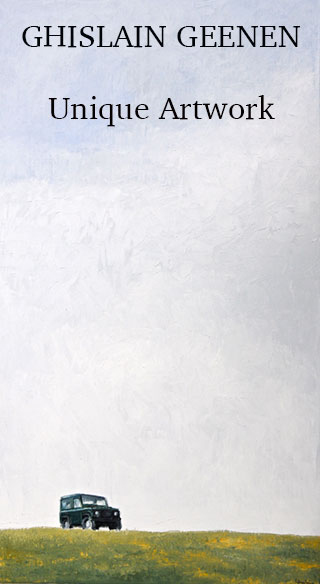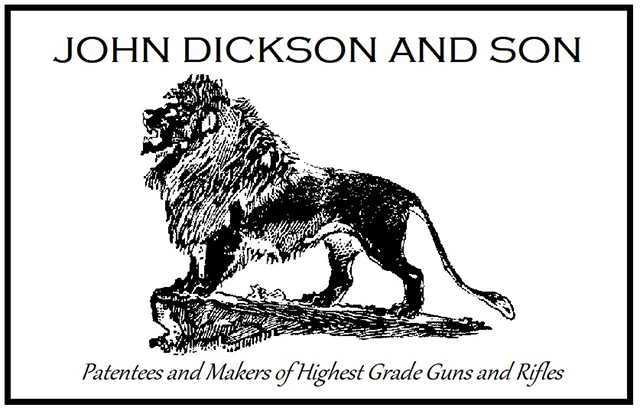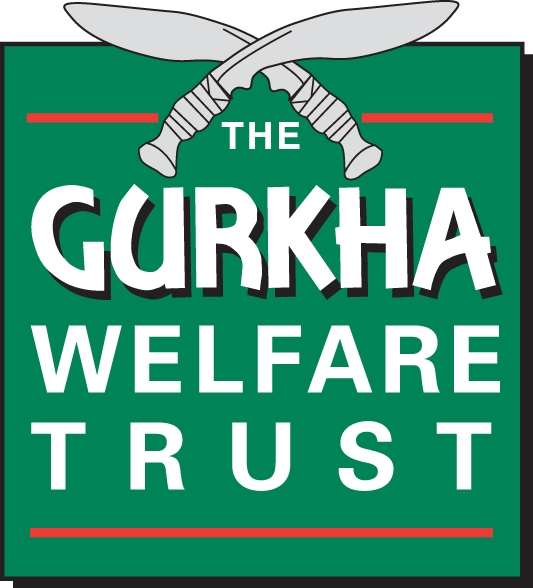If you are anticipating a drop in the price of English guns, in the wake of the announcement that lead shot should be phased out over the next five years and are considering taking advantage of the situation, there are some considerations you need to mull over before writing the cheque. The first is the ammunition you are going to use in it.
The advice coming from the authorities at the moment is, frankly, un-supported by data and over-simplistic in delivery. The latest missive from the GTA and the Proof Houses is that you can shoot ‘standard steel’ loads in your 2 3/4” nitro-proofed British gun. Hopefully, you will note the caveat to do so only in guns with 2 3/4” chambers, good wall thickness and in good condition.
Suitability for various types of ammunition has always been gauged via proof testing. Now, it seems we are skipping a test and being told ‘standard steel’ is fine in guns proof tested with lead. That is not proof, it is assumption.

What is meant by ‘good condition’? What is meant by ‘good wall thickness’? What of other factors? This is all troublingly imprecise. One barrel maker I spoke to this week told me he had seen many older guns damaged by steel shot, with rivels, bulges and scoring of the bores common.
The smooth passage of steel shot through a barrel is made possible by a skilled barrel maker working with all his knowledge to avoid the many pitfalls that may be inherent in older barrels made and proofed for lead shot.
Starting with the chamber, it needs to hold the pressure generated by the burning powder trying to propel the steel at sufficient speed to compensate for its lighter weight. That requires a good quality steel of sufficient toughness to withstand the expansion. The pressure-wave will differ from that produced by the lead-loaded cartridges for which the gun was proof tested. This, in turn, puts more pressure on the face and action of the gun. This is why we see some guns crack at the radius (the angle between face and bar) at re-proof.
Next, the forcing cone, which leads the shot column, in its closed-cup wad, from the chamber into the bore. A modern, steel shot proofed 12-bore gun will have barrels made to .728” (18.5mm) in the bore. Many older guns can be much tighter (.710” is not uncommon). Steel is much less ‘fluid’ in its movement than lead because it is harder. This additional compression will put further stress on the barrel walls.
Most older guns will have had the barrels lapped-out to remove pitting. They may still have some pitting. They may have dents or bulges. they may no longer be concentric.These factors could be material in affecting the safe passage of the shot. If it has been proof tested with lead, its reaction to steel loads remains un-proven. Many gun owners do not possess the training or observational ability to spot and evaluate these factors.
Once moving down the bore, the shot column may encounter some other hurdles. Many older guns originally had no choke (it wasn’t popularised until 1875). This is a good thing, as a cylinder muzzle will not obstruct the passage of the ejecta. However, some guns were recessed choked, providing a wider section behind the muzzle to allow the shot charge to widen, before again being constricted at the muzzle. This provides a disruption to the flow of the charge. If this back-boring has been done retrospectively, it will also have thinned the tubes in that section.
Many older guns originally had no choke (it wasn’t popularised until 1875). This is a good thing, as a cylinder muzzle will not obstruct the passage of the ejecta.
New steel-shot barrels generally have wall thicknesses of over 30 thou’ minimum. Many older guns have much thinner walls due to the removal of pitting in the past. They may have thin spots, where a dent or a bulge has been removed. These are weak spots. To find them you need a wall thickness gauge and the experience to use it.
If the muzzle is choked, the shot begins to leave the wad behind at the choked section. This allows the hard steel shot to scrape the soft steel barrels and score them. The angle of the choke cone is important too. If it is steep, it will compress the shot column too fast and the result could be a bulge.
The advice is not to shoot steel through chokes tighter than Half. How do you determine that? A choke gauge is useless. All that tells you is the muzzle diameter. The true measurement is the difference between the muzzle diameter and that of the bore behind the choke cone. You need a bore gauge to measure that and do the calculation. How many people own a bore gauge?
There are simply too many factors here that are un-proven in most of the old guns currently in use. Despite the assurances that you can shoot ‘standard steel’ loads in your guns (as long as they are 2 3/4” chambered and nitro proofed), I advise owners of British guns not to do so. There are simply too many unknown factors that could damage your gun or endanger you.

At the very least, get the gun to a qualified and experienced expert (ideally a barrel maker) to have the barrels measured and assessed before you even consider putting steel shot through them.
In the meantime, your off-the shelf alternative is bismuth. It may be more expensive but it is the best, safest, alternative to lead now on the market.
We have, however, five years to shoot lead as much as we like and are simply being encouraged to experiment with alternatives, while the cartridge makers develop better non-toxic game loads.
If, like me, you are an enthusiast for English guns, you may well be thinking that the odious Mr Rees-Mogg’s advice from his father that you can make money from any disaster could indicate an advantageous situation on your horizon. More simply, as a client put it to me; “The guns I like buying could become cheaper”.
The market may react negatively to the lead phase-out. Some will probably decide that there will be a lead shot ban in five years, so now is the time to get rid of the old guns. If they do, and a lot of guns hit the market at once, there may be an opportunity to buy something very nice for not a great deal of money. So, should you buy one?
Some will probably decide that there will be a lead shot ban in five years, so now is the time to get rid of the old guns.
One auctioneer told me that the price of English guns was already historically low and he couldn’t see much scope for further falls. The March auctions will give us an indication of early market reaction.We must remember that many buyers bidding in British auctions are not British.
Americans and Russians will not be at all phased by the current situation in the UK and if nice guns look like they are going cheap, they will be happy to buy them. We have seen the auctions hold-up well in the past to currency fluctuations and when one market weakens another one generally steps in to shore-up prices.

What are the risks if you do decide to buy a British gun? Let us imagine that prices in the next twelve months drop by 30%. That £15,000 Purdey you always wanted but couldn’t justify is now just over £10,000. If you have to shoot bismuth through it eventually, the saving you just made will buy you 5,000 bismuth cartridges.
Assuming you shoot ten two hundred bird days a season, firing an average of 100 shots per day, you have enough ammo there for five seasons of shooting before you move above break-even. If you account for the cost of the lead you would have used, then you have another £1,750 to the kitty, buying you another two seasons of bismuth. So, if you are fifty, you can shoot until you are sixty-two without having to pay out anything extra, just based on the saving you made when you bought the gun.
As the current proposals stand, we will still have lead to shoot at clay grounds, allowing for regular practice with lead shot. It is only the shots you fire on a game shoot that will require the use on non-toxic shot. If you really can’t see yourself paying a pound a shot for bismuth and you want to explore steel shot alternatives, then you need to look at a very clean English gun with 2 3/4” chambers or have your gun adjusted and re-proofed to handle standard steel loads.
There is still a collector’s market for obsolete gun and rifles...
There is still a collector’s market for obsolete gun and rifles, as there is form muzzle -loaders, despite the difficulty with using these in the field. Don’t expect the value of best British guns to collapse. As always, look for the very best quality in the best, original condition. That sector of every market is always the most reliable. Furthermore, do not buy these guns as ‘investments’. Buy them because you love them and appreciate the privilege of shooting them. That being the case, accept that they cost a little more in money and effort to keep them in the line and adjust your shooting budget accordingly.

All, however, is not yet certain. When leaded petrol was banned in 2000, an exemption for classic vehicles allowed 0.5% of petrol sales to be leaded four-star, sold through accredited classic vehicle clubs. The tiny amount of lead emitted by the few vehicles still using it became essentially irrelevant. The same argument can be made for classic English shotguns. If a lead phase-out achieves a 95% reduction and only users of pre-WW2 British guns continue to use lead shot, the problem will be so small as to be unworthy of further restriction.
Is this a good time to buy an English gun? It could be. Keep your eyes peeled, we might begin to see some new-to-market heirlooms making themselves available.
Published by Vintage Guns Ltd on




